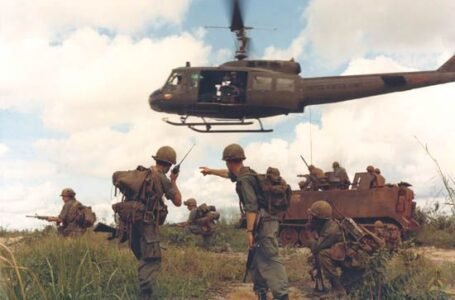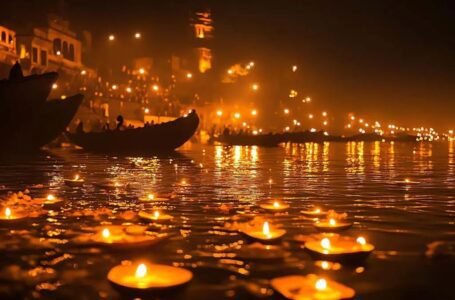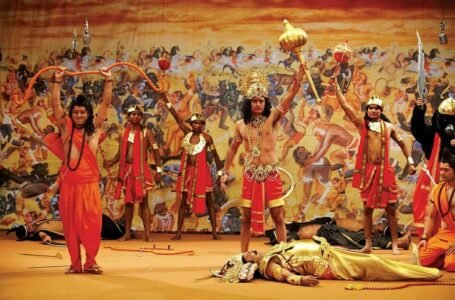Kumaon Regiment : Courage Amidst the Mountains

-Trushti Dand
The Kumaon Regiment is one of the most decorated and battle-hardened infantry regiments of the Indian Army. Its roots trace back to 1813, making it one of the oldest regiments in the Indian military history. The origins of the regiment lie in the 2nd Battalion of the 18th Regiment of Bengal Native Infantry, raised by the British East India Company primarily with recruits from the Kumaon hills and surrounding regions of present-day Uttarakhand.
Initially raised as part of the Nainital Levy, it went through several reorganizations under British command before being formally designated the 19th Hyderabad Regiment in 1922. Following independence, in 1945, the name was changed to the Kumaon Regiment to better reflect its geographic and cultural roots. The regiment draws its troops predominantly from the Kumaonis, Ahirs (Yadavs), and Rajputs of Uttarakhand, Haryana, and nearby regions, forming a diverse yet cohesive fighting force.
Participation in British Colonial Campaigns
During the British era, units of what would become the Kumaon Regiment saw extensive action in colonial campaigns. The troops were deployed in Burma, Abyssinia, China, and Mesopotamia. These deployments helped develop the regiment’s expertise in jungle warfare and mountain terrain operations, skills that would serve it well in later conflicts.
The Burmese Campaigns of the 19th century were particularly notable, where Kumaon units fought in harsh jungle environments and earned a reputation for endurance and bravery. They also participated in the Second Afghan War and campaigns in the Northwest Frontier, strengthening their credibility as one of the reliable hill regiments of the British Indian Army.
Distinguished Service in World War II
The regiment, then known as the 19th Hyderabad Regiment, played a major role during World War II. Several battalions fought in various theaters including Burma, Malaya, North Africa, and Italy. One of the most famous episodes from this period is the stand of the 1st Battalion of the 19th Hyderabad Regiment (1/19 Hyderabad) at the Battle of Malaya.
1/19 Hyderabad, composed of Kumaonis and Ahirs, fought to the last man in February 1942 at Bukit Timah, near Singapore, during the Japanese invasion. The legendary last stand of the Ahirs at Rezang La is often compared with this battle, although the Bukit Timah action occurred two decades earlier. The battalion’s bravery, despite being outnumbered and outgunned, was widely admired. After the war, many members of the regiment were awarded gallantry medals including the Military Cross and Order of British Empire (OBE).
Role in the Indo-Pakistani War of 1947–48
After independence, the newly formed Kumaon Regiment played a vital role in India’s first war with Pakistan in 1947–48, following the tribal invasion of Jammu & Kashmir. One of the most iconic battles of this war was the Battle of Rezang La, fought on 18 November 1962 by the 13 Kumaon Regiment, composed primarily of Ahir troops.
Though the battle occurred during the Sino-Indian War, it cemented the Kumaon Regiment’s reputation as one of India’s bravest fighting units. Under the leadership of Major Shaitan Singh, the Charlie Company fought to the last man against overwhelming Chinese forces at Rezang La in Ladakh. 123 out of 124 soldiers laid down their lives but prevented the Chinese from capturing the strategic pass. Major Shaitan Singh was posthumously awarded the Param Vir Chakra, India’s highest military honor.
In the 1947–48 war with Pakistan, Kumaon battalions were deployed in critical areas such as Tithwal, Poonch, and Uri, securing key posts and defending against Pakistani tribal and army incursions.
Involvement in the 1962, 1965, and 1971 Wars
During the 1962 Sino-Indian War, apart from Rezang La, other battalions of the Kumaon Regiment saw intense combat in NEFA (now Arunachal Pradesh) and Ladakh. The troops fought in freezing temperatures and rugged mountain terrain, displaying exceptional courage despite inadequate preparation and logistical support.
In the 1965 Indo-Pak War, the Kumaon Regiment was deployed in both the western and northern sectors. The 6 Kumaon fought valiantly in Kargil, while 4 Kumaon and 14 Kumaon were instrumental in the defense of forward posts in Jammu. The regiment earned several gallantry awards during this war for defending against coordinated Pakistani attacks.
In the 1971 Indo-Pak War, Kumaon battalions fought in Punjab, Rajasthan, and the Eastern front (Bangladesh). Their operations in Jessore and Khulna sectors contributed significantly to India’s victory and the creation of Bangladesh. Several officers and soldiers received gallantry awards, and the regiment added more battle honours to its distinguished roll.
Operations in Siachen and Kargil
The Kumaon Regiment has also been deployed extensively in Siachen Glacier, the world’s highest battlefield, since 1984, when India launched Operation Meghdoot to occupy strategic passes. Kumaon troops adapted well to the glacial conditions, showcasing their mountain warfare expertise.
During the Kargil War of 1999, Kumaon battalions were part of key offensives in Drass, Batalik, and Kargil sectors. Their role in recapturing enemy-held positions contributed to India’s operational success. The regiment received commendations for tactical brilliance and bravery under fire.
Gallantry Awards and Honours
The Kumaon Regiment is one of the most highly decorated regiments in the Indian Army. It has received 2 Param Vir Chakras, 4 Ashoka Chakras, 10 Maha Vir Chakras, 20 Kirti Chakras, 52 Vir Chakras, and over 150 Sena Medals. These awards highlight the consistent bravery shown by its troops in both war and peacekeeping operations.
The Param Vir Chakra awarded to Major Shaitan Singh in 1962 remains the most iconic recognition of the regiment’s legacy. Another notable awardee is Naik Jadu Nath Singh, who was posthumously awarded the Param Vir Chakra during the Battle of Naushera in 1948, when he held off multiple enemy attacks and saved his post from falling into Pakistani hands.
Notable Officers and Commanders
The Kumaon Regiment has produced many distinguished military leaders who have served at the highest levels of command. General Sundarji, one of India’s most respected Army Chiefs and the architect of India’s mechanized warfare doctrine, began his career with the Kumaon Regiment.
Major Shaitan Singh, Naik Jadu Nath Singh, and Lieutenant Colonel Dhan Singh Thapa (recipient of the Param Vir Chakra in the 1962 war for defending Pangong Lake post) are some of the most iconic names associated with the regiment. Their leadership and courage have set benchmarks in Indian military history.
Regimental Centre and Organization
The Kumaon Regimental Centre (KRC) is located in Ranikhet, Uttarakhand, in the heart of the Kumaon Hills. The scenic yet rugged location reflects the regiment’s ethos of high-altitude warfare and discipline. The KRC also houses the War Memorial Museum, which honors the gallant soldiers who have served and sacrificed over the decades.
The regiment currently consists of more than 20 battalions, including regular, Territorial Army, and Rashtriya Rifles units. It follows a unique recruitment structure that includes Kumaonis, Ahirs, and Central Indian Rajputs, representing different cultural heritages united by a shared regimental pride.
Culture, Identity, and War Cry
The Kumaon Regiment has a deeply rooted cultural identity tied to the mountains and local traditions. The regimental motto is “Parakramo Vijayate” meaning “Valour Triumphs”. The regiment’s war cry is “Kalika Mata Ki Jai”, invoking the Goddess Kali, revered in the Kumaon hills for strength and protection.
The regiment’s insignia features a demi-lion holding a curved khukri, symbolizing courage and the mountain warrior spirit. The martial music, local folk dances, and Kumaoni traditions are actively preserved and celebrated during regimental events, strengthening the bond among troops and their roots.
Peacekeeping Missions and Modern Deployments
The Kumaon Regiment has also participated in UN Peacekeeping Missions in countries such as Congo, Lebanon, and Sudan, where they have earned praise for professionalism and humanitarian engagement. Their ability to operate in challenging environments has made them an asset to international peace efforts.
In modern-day India, Kumaon battalions are frequently deployed in counter-insurgency operations in Jammu & Kashmir, Northeast India, and Left-Wing Extremism-affected areas. Their performance in internal security operations has been widely commended, and several battalions have received Unit Citations and Chief of Army Staff (COAS) Commendation Cards.
Legacy and Cultural Importance
The Kumaon Regiment is more than a military unit—it is a symbol of courage, regional pride, and national service. The regiment represents the martial traditions of the Kumaon hills, and soldiers from this regiment are held in high esteem within their communities. Their stories of bravery are passed down through generations, inspiring young men to follow the same path.
Families in Kumaon and other recruiting regions view service in the regiment as a badge of honor. Temples, schools, and village squares often feature memorials to fallen Kumaon soldiers, underscoring the close connection between the regiment and the communities it represents.
Conclusion
The Kumaon Regiment, with its proud legacy of over two centuries, continues to stand as a symbol of courage amidst the mountains. From colonial campaigns to modern warfare, from freezing outposts in Ladakh to dense jungles in Burma and Africa, Kumaon soldiers have consistently demonstrated bravery, loyalty, and an unbreakable spirit.
Their gallantry in iconic battles like Rezang La, Naushera, and Jessore, along with countless peacekeeping and internal security missions, testifies to their enduring value to the Indian Army. As defenders of the nation’s sovereignty and ambassadors of Kumaoni valor, the men of the Kumaon Regiment remain ever ready—undaunted, disciplined, and fearless.


